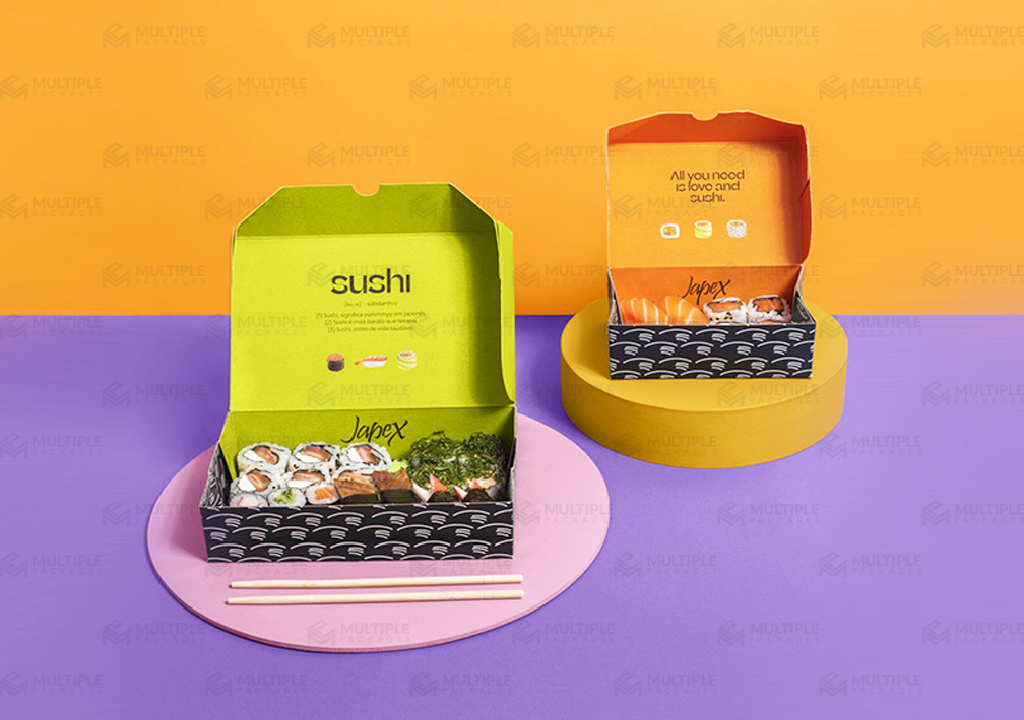The most important factor in guaranteeing food safety is the packaging. Maintaining consumer well-being and health depends heavily on food safety.
The food is wrapped to withstand shipment, handling, and storage. Food safety can be seriously compromised if the integrity of custom packaging food is not regularly inspected and tested.
Food is shielded by packaging against the elements, infection, heat, physical harm, and many other things.
Therefore, using correct packaging helps to ensure the safety of your food goods. Due to the increase in snacking, it is now even more crucial for food manufacturing enterprises to preserve the integrity of the packaging of their snack packs.
Let’s examine the factors that make proper food packing so important for ensuring food safety.
How Packaging Maintains Food Safety
Making the right packing material selection is essential to keeping your food safe. The materials used to package food are varied and include plastics, paper, glass, and metals.
Embossed on custom packaging food that has received food-safe certification is the phrase “wine glass and fork.”
The types of materials that manufacturers can employ to create food containers are subject to strict FDA rules. What materials can be used to make food containers as outlined in the FDA Regulation 21 CFR?
The rule makes sure that the food is not harmful to health because of the container. Additionally, the packaging should guarantee that no additional materials enter the food after it has been packed.
The choice of materials for food containers has also been impacted by the pandemic. The virus can persist on packaging material for days, according to preliminary investigations. Customers may simply disinfect them using conventional disinfectants, though.
This has forced manufacturers to design custom packaging food that is simple to clean. Along with PET packaging, grab-and-go packaging ideas like Ready-To-Eat (RTE), Ready-To-Heat (RTH), and others will grow. Nowadays, consumers prefer to prepare and cook their own meals at home before dining.
Customer Loyalty Rises
Customers like to purchase goods that are secure for them and their loved ones. Custom packaging food that can be tampered with is an obvious sign that you care about your customers’ safety.
Customers who realize that the company providing their food recognizes the importance of safety will be more devoted to your goods.
Repeat business and higher revenues might result from improved client loyalty.
One-third of customers worldwide firmly believe that protective custom packaging food increases consumer perception of the brand and increases the likelihood of brand purchase.
Enhances the Product’s Shelf Life
The truth is that proper custom packaging food extends the food product’s shelf life greatly. Food safety issues result from decreased shelf life caused by poor and inadequate packaging.
The general belief is that keeping food at low temperatures will lengthen its shelf life. This fact is only partially true, though.
If the food inside the package is exposed to oxygen, it will still begin to deteriorate.
For this reason, it is important to guarantee the integrity of the custom packaging food so that no food is ever entirely exposed to the air. Therefore, the key to securely storing food for a longer period of time is proper packing.
Changes in Labeling During the Pandemic
Since the epidemic, consumers have tended to favor goods with uncluttered, clear labeling. Although label design cannot ensure product safety, it can express it subtly.
Consumers like food labels that make it easy for them to immediately identify the ingredients.
Products that have not been touched or tampered with are now sought after by consumers. Because of this necessity, security labeling is crucial.
Consumers today appreciate having their groceries and food delivered to their homes, therefore they search for tamper-evident labeling to make sure their deliveries are undamaged.
The Environmental Impact of Food Waste and the Role of Custom Packaging Food
About one-third of all food produced worldwide is wasted, according to studies done by the Food and Agriculture Organization (FAO) of the United Nations.
Though for various causes and at various points in the food chain, this is true in both emerging and developed countries.
The UN’s Sustainable Development Goals set a target of halving food loss and waste by 2030, signaling that this enormous and pervasive misuse of resources is rapidly becoming a serious global concern.
Why set a goal that is so lofty? Food waste actually has significant effects; in fact, it is responsible for 8% of the world’s greenhouse gas emissions, according to FAO and the World Resources Institute.
Once more, every link in the supply chain has a responsibility to reduce waste: producers may optimize their production and sales plans, middlemen can locate suitable secondary markets or even donate excess food rather than letting it deteriorate, and customers can buy more carefully. Get unique food boxes from the best wholesale packaging supplier right now.
 +1(332)-233-6292
+1(332)-233-6292

